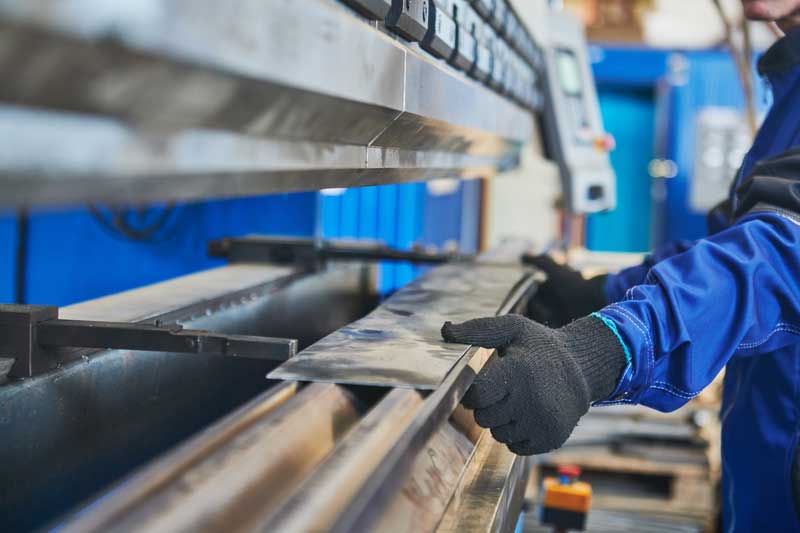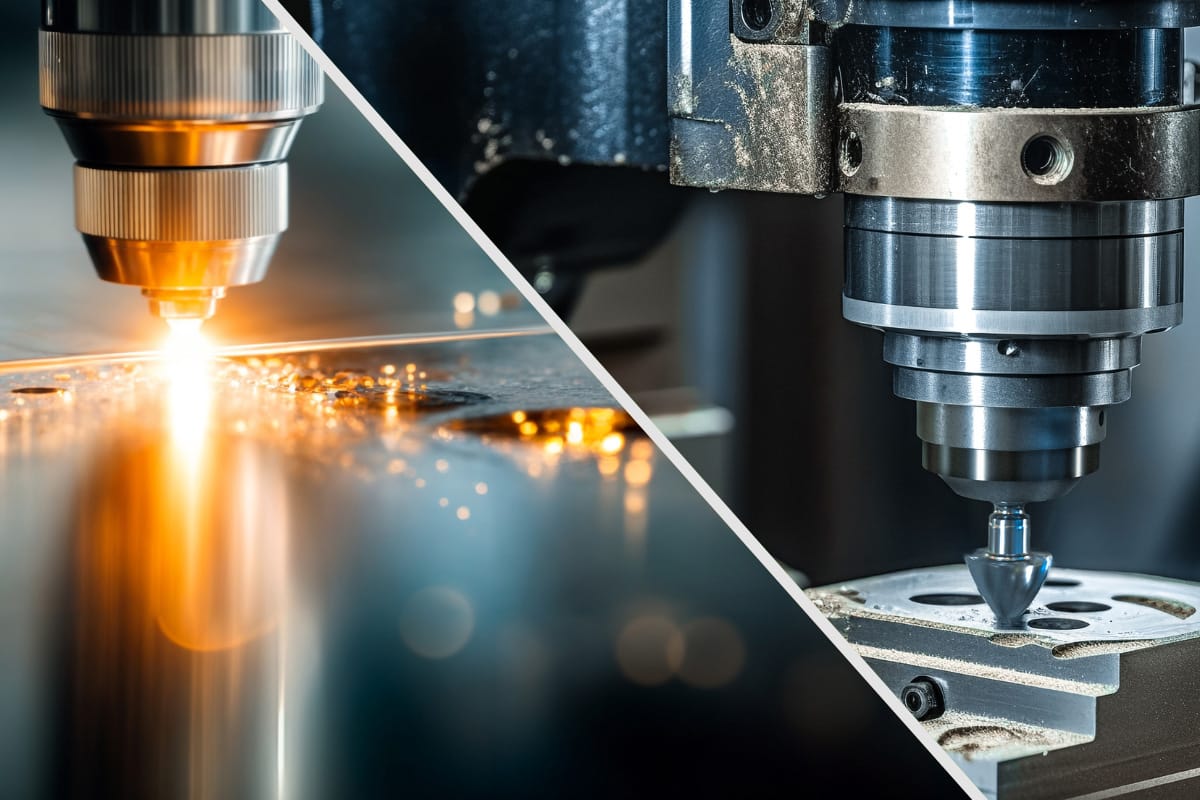Many metals are flexible, meaning that they bend before they break. This allows them to be formed into a number of shapes and sizes. There are a variety of kinds of equipment that can be used to bend these metals, the most common being the press brake. This machine is a useful and integral facet of most full-service metal fabrication companies. At IMS, we utilize the Trumpf Brake Press. Having a good brake press on hand is crucial to our operations.
What is a press brake?
A press brake is a long narrow machine for bending sheet and plate material. It consists of a flat surface onto which the material is placed and a clamping bar which holds the material firmly during the bend. A press brake forms predetermined bends by clamping the workpiece between a matching punch and die. These devices are highly customizable and precise and use computer technology to increase efficiency and control accuracy.
How does a press brake work?
Press brakes use a punch and die, set at a predetermined angle, to bend or cut metal into a variety of shapes and forms. This durable, versatile device form bends by clamping the metal between the punch and die, bending the metal multiple times until it reaches the required shape. The greater the force applied, the thicker the material that can be bent. Each press has a specific load limit, based on the maximum length of metal that it can handle and the maximum pressure that can be applied.
What are the advantages of using a press brake?
- Flexibility: A press brake is suitable for any size of sheet metal and can bend a wide variety of materials and thicknesses
- Reduced waste: This machine boosts high-end precision and accuracy, creating fewer waste materials.
- Versatility: Combined with segmented punch and die sets, acute tooling and sophisticated controls, a press brake can form complicated multi-angle parts with ease. It’s the best bending option in low-volume, high-mix environments.
- Increased productivity: These presses reduce the occurrence of defects, increasing productivity. They’re perfect for batch work.
- Prototype forming: The speed and ease of setup and tooling allow switching between apps, simplifying the process of prototyping.
- Reduced costs: Press braking is one of the least expensive bending processes.
- Control options: A press brake provides dwelling and ram speed control.
- Versatile programming: Operators can define the machine’s parameters in order to perform the intended coning, material thickness, flange dimensions, angle bends, inside radius, blank size and more.
- Automation: Press brakes can be manually operated, semi-automated or fully automated, depending on the requirements and they’re easy to program and operate.
- Complex designs: The press brake is capable of complex designs, forms and profiles using standard tooling.
What are press brakes used for?
Press brakes have a variety of applications including:
- Metal containers
- Automotive
- Aerospace
- Furniture
- Marine Engineering
- Metal artwork
- Other sheet metal applications
- Airframes
IMS strives for excellence through quality work completed using high-grade equipment. We use TRUMPF brake presses as they are geared toward situations that need precision bending. These machines enable us to provide high build quality and precision at an affordable price. At IMS, we’re responsive to our customer’s needs. We produce complex shapes, repeatedly, accurately, quickly and at a great price. Contact us to discuss options available for your sheet metal fabrication needs.




